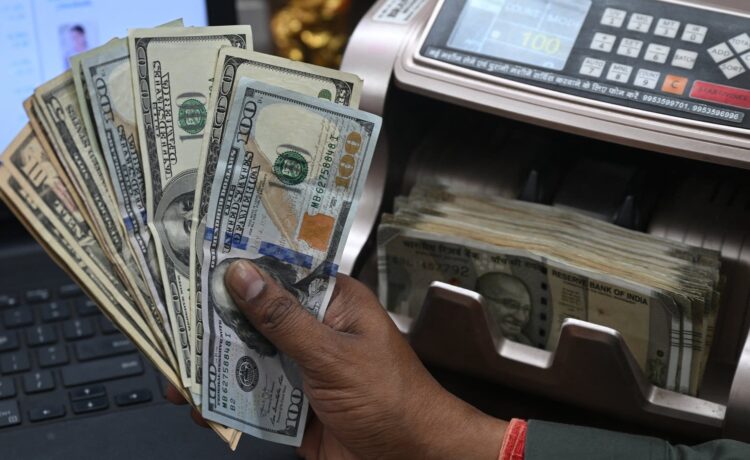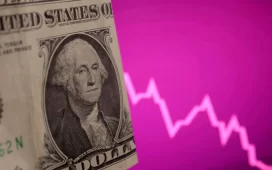More than a decade ago, walking along the busy main road of Goma in the Eastern Democratic Republic of the Congo, you could find a lot of things for sale: clothes, hats, groceries. And dollars.
Huge stacks of dollars carried by young men, known as money changers. Some dollars were so soiled they were black and limp like cloth, they’d been in circulation for so long. Others were newer.
“Everyone prefers U.S. dollars over Congolese francs,” one money changer told me. “It’s more stable. A lot of people here are import-exporters, and those who go to Dubai or France, they always use dollars,” he said.
That was true then in the Congo and it’s still true all over the world.
“About half of international trade is invoiced in dollars,” said Maurice Obstfeld, a senior fellow at the Peterson Institute for International Economics and former chief economist for the IMF. “It’s the leading invoice currency in the world economy.”
A lot of medicine is priced in dollars. A lot of loans are too, and especially commodities.
“Australia has a lot of gold mines. If Australia sells gold to India that gold will be priced in U.S. dollars,” said Colin Carter, an agricultural economist at the University of California, Davis.
This all started after World War II, when the U.S. economy was the last one standing and a lot of countries started to peg their currencies to the dollar for a while.
But today there’s no treaty or anything that says people have to use the dollar.
“We do it because we do it,” said Carter.
The dollar is everywhere, because it’s everywhere. It’s liquid — you can buy and sell it easily. No other currency is quite like it.
“So think the Turkish lira,” said Brendan McKenna, an international economist and FX strategist at Wells Fargo Corporate and Investment Banking. “The Turkish lira is a very volatile kind of currency it’s also a currency that’s really only accessible within Turkey. There’s not a whole lot that, maybe, someone in Argentina can do with a Turkish lira.”
So, dollars it is. Big financial institutions around the world like using dollars too, said UC Davis’ Carter. “It’s very easy for them to buy and sell dollars without moving the price.”
In a small market — this goes for anything — if you make a massive trade you can actually mess with the price of whatever you’re trading. “That’s not the case in terms of U.S. dollars,” said Carter, because there’s just so many of them.
So things are the way they are because they’re the way they are.
People are, however, starting to wonder if the dollar might lose its status.
“If you had asked me six months ago, I would say absolutely not,” said Carter. “But today, it seems like maybe there’s a little crack in the dam.”
President Trump’s tariff policy and his threats against the Federal Reserve, which he has since walked back, have worried investors generally, Carter said. Some governments worry the U.S. could use the dollar as a weapon — either through sanctions or by controlling its supply in times of crisis, said the Peterson Institute’s Maurice Obstfeld.
“The broader concern is that in this environment of heightened trade tensions, the whole global financial system because it runs on dollars is intimately linked to the U.S. financial system and the U.S. government can control certain levers,” he said.
The euro or the yen might take on a more important role, but an outright dethronement of the dollar, said Wells Fargo’s Brendan McKenna, is a ways off.
“I don’t think it’s realistic, you know you would have to get a wholesale change in the global marketplace for dollars to no longer be wanted,” he said.
So the way things are is the way they are — for now.





